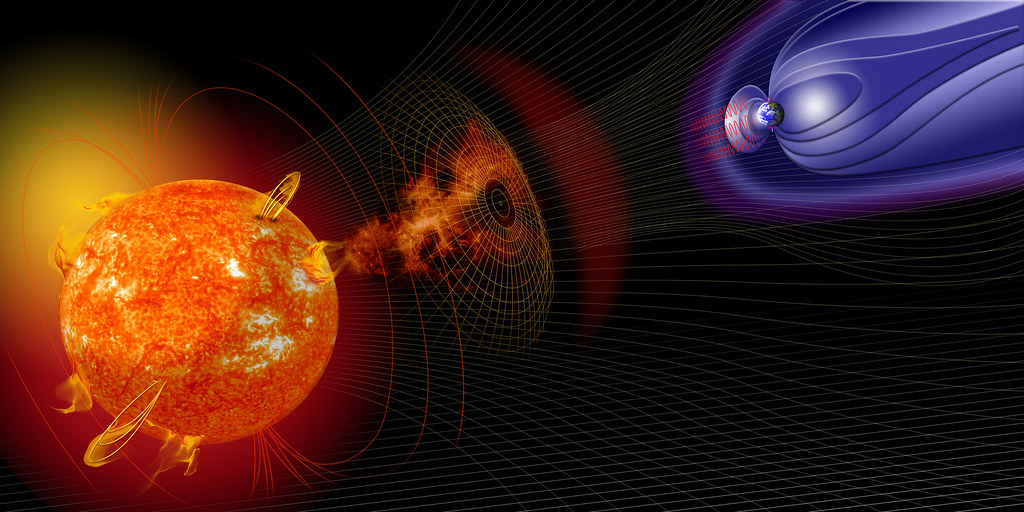Biggest hole in sun ever seen by Scientists 2023
Earth magnetic field saves our life from solar winds it is comman that every second sun emmites lots of solar waves toward earth but this time scientists found big difference in wave strenghth due to bigest hole in the sun and in this hole we can fit around 60 earths,It has expanded to an extraordinary width of nearly 4,97,000 miles
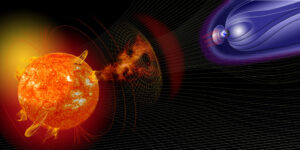
The Sun, a colossal ball of searing hot plasma, has fascinated scientists and astronomers for centuries. Despite its prominence in our daily lives, there are still mysteries surrounding this celestial giant. One of the most intriguing phenomena is the presence of “holes” on the Sun’s surface, specifically the largest among them. In this article, we will delve into the enigmatic world of solar holes and explore the significance of the biggest hole in the Sun.
Solar Holes:
Solar holes, also known as coronal holes, are vast regions in the Sun’s outer atmosphere where the solar magnetic field opens up, allowing high-speed solar winds to escape into space. These holes appear darker and cooler compared to their surroundings, creating a stark contrast on the Sun’s surface. They are not actual holes in the traditional sense but rather regions with lower plasma density and temperature.
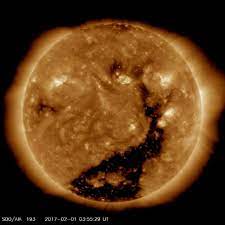
Coronal holes are a common feature on the Sun and play a crucial role in the solar-terrestrial connection. The solar wind originating from these holes can influence space weather, impacting satellite operations, power grids, and even causing auroras in the Earth’s atmosphere.
Identifying the Largest Hole:
Among the various coronal holes that appear on the Sun, identifying the largest one is a challenging task. Solar scientists use advanced instruments like the Solar Dynamics Observatory (SDO) and the Solar and Heliospheric Observatory (SOHO) to observe and study these phenomena. The size of a coronal hole can vary, and the largest ones can span hundreds of thousands of kilometers across the solar surface.
Significance of the Biggest Hole:
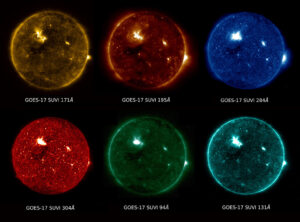
Understanding the significance of the largest hole in the Sun requires exploring its impact on space weather and the Earth. The solar wind emanating from these expansive coronal holes can have several effects:
- Geomagnetic Storms: Solar winds interacting with the Earth’s magnetic field can lead to geomagnetic storms. These storms have the potential to disrupt communication systems, satellite operations, and power grids.
- Auroras: The particles from the solar wind colliding with the Earth’s atmosphere can produce breathtaking auroras, visible near the polar regions.
- Radiation Exposure: Astronauts in space and high-altitude flights can experience increased radiation exposure during periods of heightened solar activity.
- Satellite Anomalies: Solar winds can affect the functioning of satellites in orbit, leading to anomalies and potential damage to electronic systems.
- Space Weather Impact: Solar holes are a primary source of high-speed solar wind. When the solar wind from coronal holes interacts with Earth’s magnetic field, it can cause geomagnetic storms. These storms, in turn, have the potential to disrupt satellite operations, communication systems, and power grids on Earth.
- Scientific Research: Studying solar holes provides valuable insights into the Sun’s magnetic dynamics and how they influence the solar wind. Scientists use data from space-based observatories, such as the Solar Dynamics Observatory (SDO) and the Solar and Heliospheric Observatory (SOHO), to monitor and analyze these phenomena
Causes of Solar Holes:
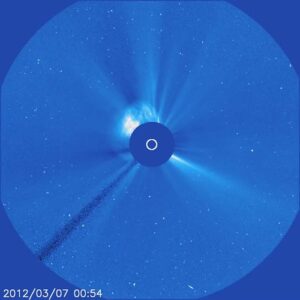

- Magnetic Structure: Solar holes are closely tied to the Sun’s magnetic activity. The Sun’s magnetic field is dynamic and constantly changing. When the magnetic field lines diverge, creating openings in the corona, solar material is more likely to escape, resulting in the formation of coronal holes.
- Solar Cycle: The Sun undergoes a roughly 11-year solar cycle marked by periods of increased and decreased solar activity. Coronal holes are more prevalent during periods of solar minimum when overall solar activity is lower. During these phases, magnetic fields on the Sun become less tangled, leading to the formation of larger and more pronounced coronal holes.
- Polar Regions: Coronal holes tend to be concentrated around the Sun’s polar regions. This is because the Sun’s magnetic field lines are more open near the poles, allowing solar wind to flow more freely into space.
Conclusion:
The biggest hole in the Sun represents a captivating area of study for solar scientists and astronomers. Its impact on space weather and its role in shaping the interactions between the Sun and the Earth underscore the importance of ongoing research in solar physics. As our understanding of these solar phenomena advances, we move closer to predicting and mitigating the potential impacts of solar activity on our technology-dependent world. The exploration of the biggest hole in the Sun continues to be a thrilling journey into the heart of our solar system.

